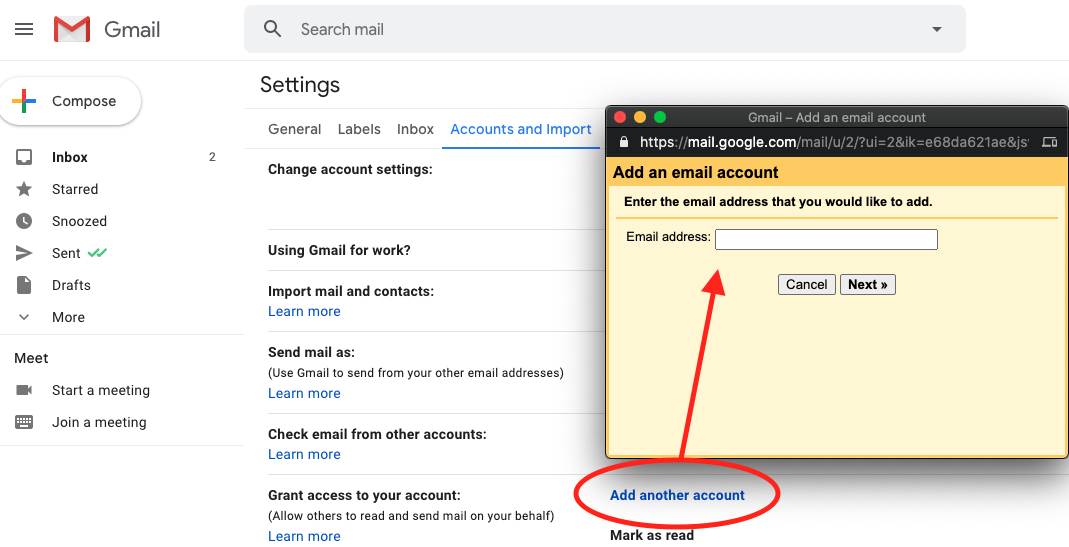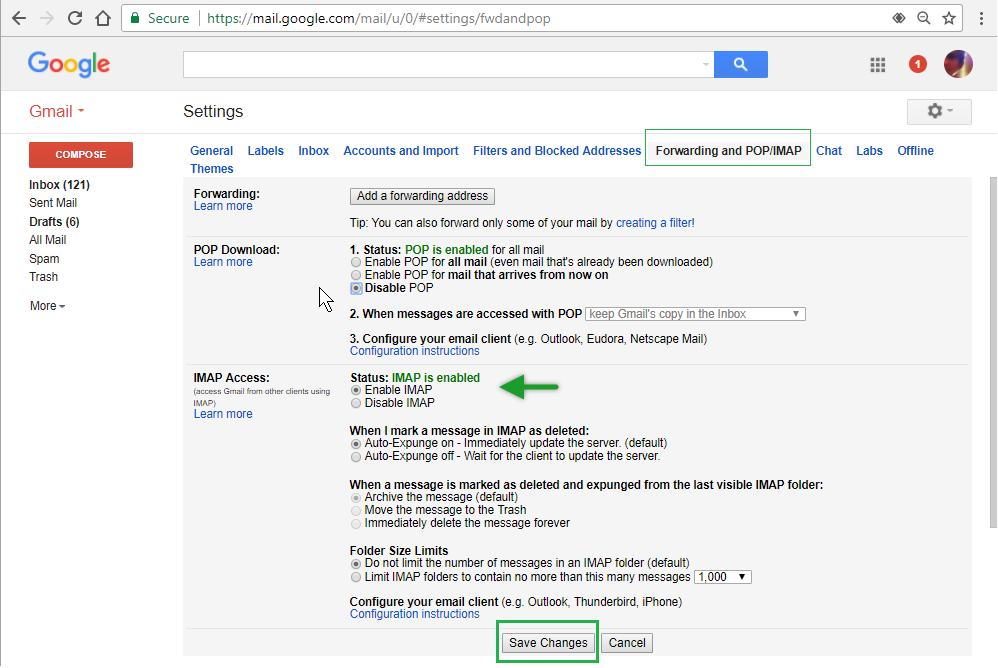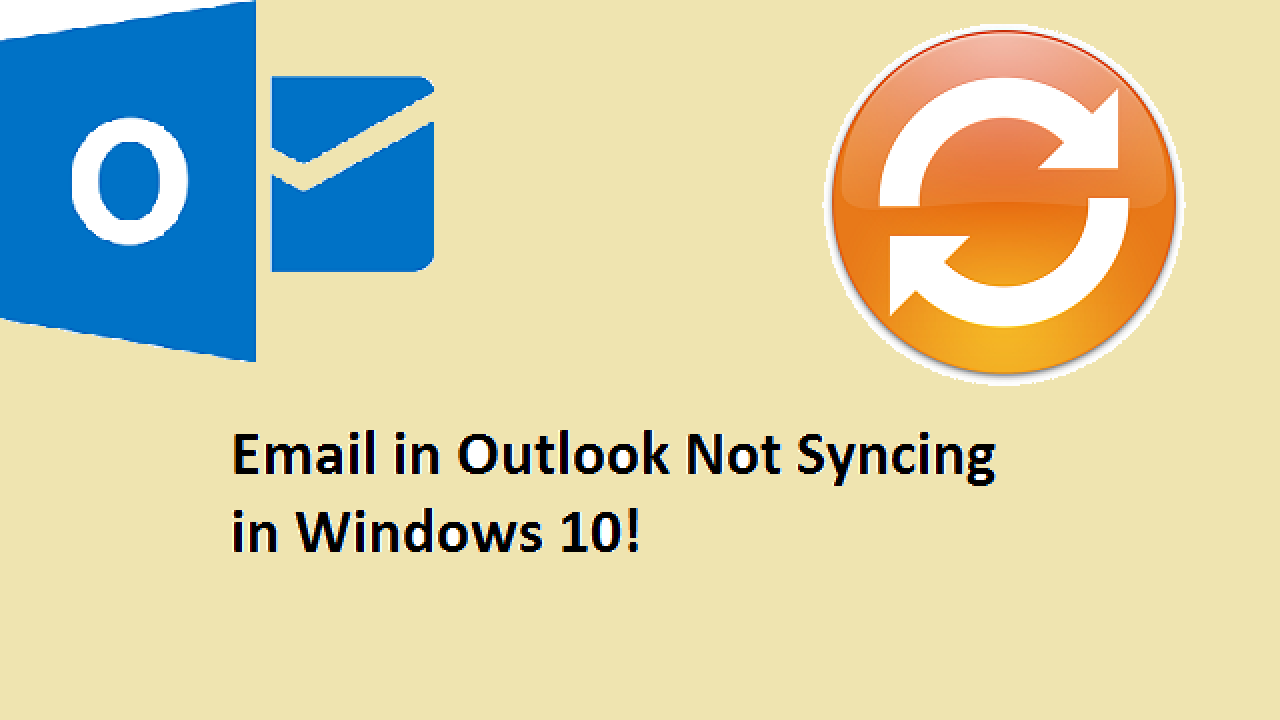The below-mentioned method will help Sync Gmail with Outlook: First, sign in to your Gmail account using valid credentials. Go to the gear icon in the top right corner, then choose Settings. Next, select Forwarding and POP/IMAP tab, then enable the IMAP option. We would like to show you a description here but the site won’t allow us.
If you’re here, your business may be in a position to continue using Microsoft products like Outlook, but you may want to use Gmail and other G Suite products at the same time. If this is the case, there’s actually a super convenient way you can sync your Gmail account with Outlook.
If you’re migrating from Outlook and Microsoft products to G Suite, there’s also an easy way to port over all your previous messages and information.
Read on to learn how to sync Outlook with Gmail.
Table of Contents
- Making the Most of Gmail
Setting Up Outlook to Sync With Gmail
First, let’s cover how to set up Outlook to work with Gmail. This is handy if you want to rely on Gmail for most of your email purposes, but you want to make use of the organizational functions or UI layout of Outlook.
Before you can start the syncing process, you’ll need to adjust a few settings in Gmail to make sure it works smoothly with Outlook. Your first step is to enable the IMAP protocol for your Gmail account, which is a fancy name for a standard email protocol that allows you to access and manipulate messages.
This is how you do it:
- Log into your Gmail account.
- Click the Gear icon, and head to Settings.
- Click on the “Forwarding and POP/IMAP” tab.
- Scroll to IMAP access and make sure “Enable IMAP” is checked. If it’s already checked, you don’t have to do anything.
- Click Save Changes. This is at the bottom of the screen.
When you’re done with that step, you can add your Gmail account to your Outlook platform. Follow these steps to accomplish this:
- Open Outlook.
- Head to File, then Account Settings.
- When you have the Account Settings box open, click New.
- Choose Email Account, and click Next.
- Choose “Manual Setup or Additional Server Types.” Click Next when you have.
- Choose “POP or IMAP.” Click Next when done.
- In the Add Account section, provide the necessary information. Here, you’ll need to provide several pieces of information. In the Your Name field, type your full name (or the display name you want to use). In the Email Address field, provide your full Gmail address, including @gmail.com. In the Account type field, select IMAP from the dropdown menu. In the Incoming mail server field, type “imap.gmail.com” and in the outgoing mail server (SMTP) field, type “smtp.gmail.com.” In the user name field, type your full Gmail address again, and in the password field, type your Gmail password. If you want Outlook to remember this password, check “Remember password.”
- Click More Settings.
- Enter the Outgoing Server tab.
- Check “My Outgoing Server (SMTP) requires authentication.”
- Select “Use same settings as my incoming mail server.” This will ensure the user name and password you previously entered will be used to log you in.
- Select the Advanced tab. There, you’re going to need to enter and validate some extra information. For the Incoming Server (IMAP) field, enter the value “993.” For the Outgoing server (SMTP), use the value “465.” For both “Use the following type of encrypted connection” fields, choose “SSL.” Click OK when done.
- Click Next. At this point, Outlook is going to test your connection to make sure the sync can begin.
- Finish the test. If the test is successful, you can close the box and click Finish. If the test is not successful, it’s likely because one or more of your fields has been entered incorrectly. Carefully double check every step of this process to ensure your information is accurate and complete, and make sure your internet connection is fully working.
At this point, you should be ready to use Outlook with your Gmail account!
How to Migrate Messages and/or Contacts From Outlook to Gmail
Now let’s turn our attention to the other direction; what if you want to migrate your messages and/or contacts from Outlook to Gmail?
First, it’s a good idea to check your Junk and Deleted folders for any messages you really want to keep; move these to your Inbox to ensure they aren’t lost in transition. Migrating contacts and migrating messages both follow the same general process, so you can refer to these steps no matter what you’re after.
EmailAnalytics Visualizes Your Team's Email Activity
- 35-50% of sales go to the first-responding vendor.
- Following up within an hour increases your chances of success by 7x.
- Salespeople spend an average of 13 hours per week on email.
- Log into your Gmail account.
- Click the Gear icon, then Settings.
- Within Settings, click the Accounts and Import tab.
- Scroll down to “Import mail and contacts.” If you’ve imported to this account before, you may instead see the option “Import from another address.” Click this option either way.
- Begin to follow the prompts. A pop-up box will ask you, “what account do you want to import from?” Type in your full Outlook email address, and click continue. You may be prompted to log into your other email account at this point.
- Click continue. This next box just contains some basic information.
- Review permissions and click Yes when finished. Next, you’ll need to verify some permissions, granting Google access to your Outlook account. Review these if you’re interested in learning more or if you’re concerned about your privacy.
- Select your options. Here is where you’ll decide what, exactly, you want to import. You’ll be able to import contacts, import mail, or import new mail for the next 30 days. Choose whichever options are most appropriate for your needs.
- Select “Start import,” then click OK. At this point, the migration process is going to begin. You shouldn’t need to provide any further information, or take any further action.
Note that the migration process may take a while, depending on the size of your account and the number of entries you’re importing. And by a while, I mean a while—larger accounts could literally take days. You’ll notice the messages trickle in gradually, so don’t panic if you see some but not others. Give it time, and try to start the migration process on a late Friday afternoon so you don’t have to deal with the waiting or confusion that can occur.
How to Sync Outlook Contacts to Gmail
The process in the previous section works really well. It’s reliable. It’s easy. It’s accessible to everyone. But there’s one problem with it: it’s a one-time move. If you’re a salesperson who relies on email and utilizes multiple different accounts, you may require something more. Instead of simply transferring your contacts from Outlook to Gmail, you’ll want to “sync” your contacts between Outlook and Gmail; in other words, whenever you add a new contact to your Outlook account, it will automatically populate in Gmail, and vice versa.
Unfortunately, there’s no built-in option in either Outlook or Gmail to make this happen. If you want to automatically keep your contact lists synced with each other, you’ll need the help of a third-party add-on or app.
There’s an open source add-on you can use called GO Contact Sync Mod, built especially for this purpose. With it, you can almost automatically transfer contact changes from one account to the other. Because it’s open source, it’s free and doesn’t come with any additional strings attached.
Before you can use it, you’ll need to install Microsoft .NET Framework 3.5, then install the mod itself. When you start it up for the first time, you’ll need to enter your account credentials. This is fairly straightforward. When complete, you can toggle several options, including:
- Sync Deletion, which will sync your deleted contacts, so if you delete a contact from Outlook, it will be deleted in Gmail, and vice versa.
- Prompt Deletion, which will prompt you for a manual decision whenever attempting to sync a deleted contact between accounts (so you can decide individually.
- Sync Contacts, which will allow you to sync new contacts between accounts.
- Sync Notes, which will allow you to sync individual notes between accounts.
- Sync Appointments, which will allow you to sync calendar information between accounts.
Below that, you’ll need to choose some configuration settings. The default settings will work for most users, but you may want to choose whether or not the program runs at startup, whether it automatically syncs, and how often it syncs.
Making the Most of Gmail
Now that you know how to sync Outlook to Gmail, it’s time to maximize your productivity as an emailer. If you’re a new G Suite user and you’re getting used to Gmail for the first time, or if you’ve been using Gmail for ages and you’re curious about tapping its full potential, we’ve built a tool designed to help you maximize your efficiency and productivity: EmailAnalytics.
With EmailAnalytics, you can automatically monitor your Gmail accounts (or the accounts of your employees), and pull in dozens of metrics that can help you better understand your email habits, from how often you send messages throughout the day and throughout the week, to your average email response time to incoming messages. Sign up for a free trial today, and start digging into the in-depth data visuals that can make you a better emailer.
Related posts:
Jayson is a long-time columnist for Forbes, Entrepreneur, BusinessInsider, Inc.com, and various other major media publications, where he has authored over 1,000 articles since 2012, covering technology, marketing, and entrepreneurship. He keynoted the 2013 MarketingProfs University, and won the “Entrepreneur Blogger of the Year” award in 2015 from the Oxford Center for Entrepreneurs. In 2010, he founded a marketing agency that appeared on the Inc. 5000 before selling it in January of 2019, and he is now the CEO of EmailAnalytics.

In today’s digital era you are going to find numbers of applications for email communications like Gmail, Yahoo, Zimbra, Yandex Mail, etc. Among which Gmail is most widely used web-based email client having millions of active users. No regrets that smart and efficient features of Outlook.com had brought a major evolution in web-based email services. Hence, attracting a lot of users. In this particular blog, we will discuss about the need to sync Gmail with Outlook.com. Also, we will know about the absolutely free and easy method to sync Gmail with Outlook.com.
Need to Sync Gmail with Outlook.com
There are numbers of reasons behind the need to sync Gmail with Outlook.com. Let’s know about most of the common reason behind it one by one:
- Integration with MS Office – As we know most widely used Office Suite is Microsoft Office. And this becomes the foremost reason to sync Gmail with Outlook.com. You can find MS Word, MS PowerPoint, OneNote, Excel and other application at one place to work with.
- Social Network Integration – How much people of this modern era are addicted to the social network, that can be well estimated. It has become one of the important things now. Microsoft comes with another outburst feature of social network integration. You can find popular social networking sites like Facebook, Twitter, SkyDrive, LinkedIn, Flickr, Google, and Weibo integrated with it. Which eventually makes it more preferable over the Gmail. Another reason to put light is when the most famous video chats telecommunication application i.e. Skype comes integrated with it. Then why not to sync Gmail with Outlook.com?
- No More Emails Clutter – Managing the clutter of inbox also becomes the matters of concern in caser when there are numbers of emails. With Outlook.com it becomes easy to manage the emails in the desired way. It allows users to organize the mail according to their need.
- Easy, Smart and Simple – If you are worried to use email application just because you are not a technical person then don’t worry. Microsoft has a solution for you. Outlook.com comes with very easy to use graphical user’s interface that even a non-technical person can use it easily without any kind of hassle.
- Neat Canvas to Compose – Microsoft has made sure to keep all distractions away while composing the email. It provides a neat canvas to the users to compose mail removing up the notification toggle. It also provides options like spell check, HTML option, interlinking and multiple fonts to choose from.
7 Easy Steps to Sync Gmail with Outlook.com

Now, how to sync Gmail with Outlook.com is not a big question. By following these simple steps you can easily sync Gmail with Outlook.com with just a few clicks.
How To Sync Outlook Email To Gmail Account
- First login to Outlook.com using account credentials following menu option then settings.


- Scroll down to the settings and check for “View Full Settings”.
- You will find “Sync Email” enlisted in the list. Choose sync email, then you will find options to add Gmail account, simply select it.
- Choosing it will ask you to select some options, choose the uppermost among them and press “Ok”.
- Now Google will ask you to provide Gmail account credentials.
- Soon after providing the correct Gmail or G Suite Account details. Microsoft will ask permission to access Google account. Allow it to proceed further.
Sync Outlook With Gmail Account
- Within seconds your Gmail account will be added to Outlook.com and is displayed. It provides an option to manage the synchronized account, i.e. you can edit and even remove it easily.
Note: Repeat the above-listed steps more times to add more Gmail or other email application accounts to Outlook.com.
Wrapping up
Hotmail rebranded Outlook.com comes with numbers of bursting features. Due to which most of the users want to sync Gmail with Outlook.com. Well, you are going to find numbers of methods but the free and easiest method to sync Gmail with Outlook.com in only described within this blog. It’s all about scrolling down the settings and reaching up to your required option of sync emails. Hope, after reading this you could not only sync one but multiple accounts of Gmail with Outlook.com effortlessly.
